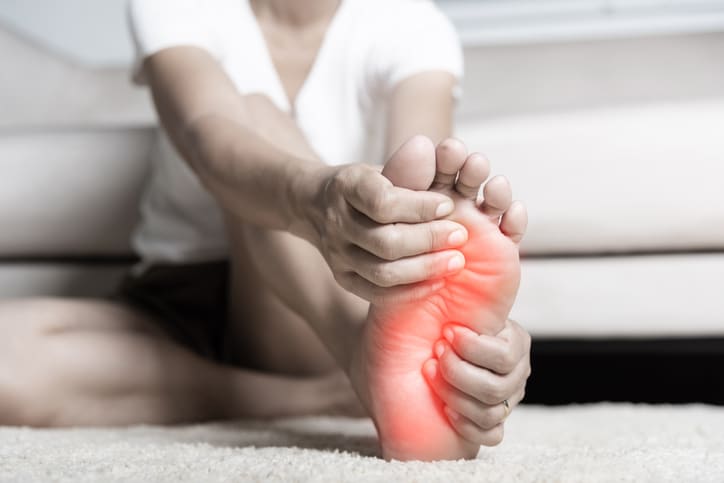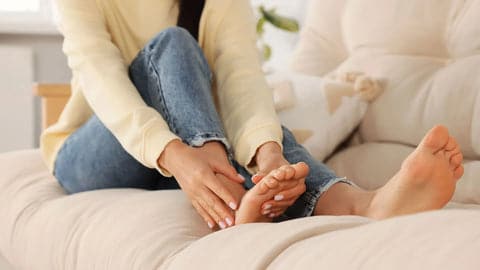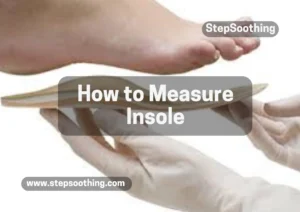Foot pain is a common problem that affects people of all ages, often interfering with daily activities. Expert advice on managing foot pain can help address the intricate biomechanics of the foot, which involve complex connections between bones, joints, ligaments, tendons, and muscles. These structures work together to support posture, alignment, and movement, but when they become strained or misaligned, discomfort and long-term issues can arise.
Ignoring foot pain can worsen conditions such as knee pain, hip pain, and lower back pain, making simple tasks like walking or standing unbearable. Early intervention is crucial to prevent chronic pain and permanent misalignment. Whether you’re dealing with plantar fasciitis, bunions, or arthritis, understanding the cause of your pain is the first step toward finding relief.
Understanding Foot Pain & Finding Relief

Common Causes of Foot Pain & How to Identify Them
Why Do My Feet Hurt? Understanding the Root Causes
Several factors contribute to foot pain, with plantar fasciitis being one of the most common. This condition causes sharp pain in the heel due to inflammation of the ligaments that support the arch. Similarly, flat feet and high arches can lead to an imbalance in pressure distribution, placing stress on the joints, tendons, and muscles.
Structural deformities like bunions and hammertoes can develop over time, especially when wearing ill-fitting shoes. Heel spurs, which are calcium deposits on the heel bone, can make standing painful. Systemic conditions such as arthritis and gout result in joint inflammation, while nerve-related issues like neuropathy cause tingling or burning sensations. Recognizing these symptoms early can help in choosing the right treatment.
Foot Pain Red Flags: When to See a Doctor
While mild foot pain is often temporary, certain symptoms should never be ignored. Sudden, sharp pain that worsens with movement, persistent swelling, or redness and warmth may indicate a serious condition such as an infection or stress fracture. If you experience any of these symptoms, seek immediate medical attention.
Other warning signs include numbness, tingling, or chronic pain that does not improve with home treatments. People with diabetes should be particularly cautious about open wounds that don’t heal, as this can lead to serious complications. If your pain persists despite wearing supportive shoes, insoles, or using other remedies, a podiatrist can provide a thorough evaluation.
Best At-Home Remedies for Foot Pain Relief
| Remedy | Best For | How It Helps |
| Ice Therapy | Swelling & Inflammation | Numbs pain & reduces swelling |
| Massage & Rolling | Plantar Fasciitis & Sore Feet | Improves circulation & relaxes muscles |
| Stretching & Strengthening | Heel Pain & Stiffness | Enhances flexibility & relieves tension |
| Orthotic Insoles | Flat Feet & Arch Pain | Provides proper foot support |
| Epsom Salt Soaks | Muscle Fatigue & Soreness | Relaxes muscles & reduces inflammation |
Using over-the-counter insoles, custom orthotics, or rigid inserts can provide targeted relief for different foot conditions. Those with flat feet benefit from arch support, while individuals with high arches need extra cushioning to absorb impact. Adjusting your gait correction through proper footwear and orthotics can significantly reduce pain.

Long-Term Strategies to Prevent Foot Pain
Daily Habits for Healthy Feet
Prevention is key to maintaining long-term foot health and overall well-being. Wearing proper footwear with supportive shoes ensures that the bones, tendons, and ligaments function properly. Avoiding high heels, flip-flops, or unsupportive footwear helps maintain alignment and reduces unnecessary strain on the joints.
Additionally, staying hydrated helps prevent muscle cramps and improves circulation, reducing fatigue in the tendons and muscles. Rotating between different types of footwear and using arch support can further aid in distributing weight evenly across the foot structure.
Best Exercises & Stretches for Foot Pain Relief
Incorporating exercises into your routine strengthens the muscles, tendons, and ligaments, improving stability and reducing the risk of injury. Some of the most effective exercises include:
- Toe stretches – Helps with flexibility and relieves tension in the joints and ligaments.
- Calf stretches – Reduces stress on the tendons and is highly beneficial for those with plantar fasciitis.
- Towel curls – Strengthens the foot muscles, improving overall posture and movement.
Performing these exercises daily can enhance foot health and prevent future pain by increasing mobility and reducing stiffness in the bones and joints.
Special Considerations: Foot Pain in Athletes & Seniors
Athletes: Foot Pain Prevention & Recovery
Athletes place excessive strain on their feet, which can lead to fatigue, misalignment, and overuse injuries. Wearing performance insoles with shock absorption helps protect the bones and ligaments from repeated impact. Proper warm-ups and cool-downs before and after exercise improve movement and posture, preventing long-term damage.
Choosing footwear designed for specific sports ensures better stability and gait correction, helping to minimize the risk of injuries. Additionally, orthotic solutions provide targeted support for high-impact activities, reducing chronic pain and improving overall performance.

Seniors: Managing Age-Related Foot Conditions
As we age, the foot structure changes, leading to conditions like arthritis, bunions, and lower back pain. Reduced stability increases the risk of falls, making proper footwear with cushioning essential for protection.
Daily foot exercises can help maintain mobility and prevent stiffness. Custom orthotics offer additional support by improving alignment, ensuring even pressure distribution, and reducing stress on aging joints and muscles. Prioritizing foot health through regular check-ups and investing in supportive shoes can make a significant difference in maintaining independence and mobility.
People Also Asked about Expert advice on managing Foot Pain
What are the best exercises for plantar fasciitis?
Stretching the ligaments, tendons, and muscles in the foot helps relieve pain. Toe stretches, calf stretches, and rolling a frozen water bottle under the arch reduce inflammation and improve flexibility. Daily stretching strengthens the joints and promotes better posture and movement, preventing future discomfort.
How can I relieve foot pain at work if I stand all day?
Wearing supportive shoes with shock absorption and arch support reduces strain on the bones, joints, and tendons. Over-the-counter insoles or custom orthotics improve pressure distribution. Taking short breaks to stretch, shifting weight, and using a footrest can ease discomfort, improving stability and preventing chronic pain.
Are custom orthotics worth it?
Yes, custom orthotics provide gait correction, arch support, and pressure distribution, reducing chronic pain. They help individuals with flat feet, high arches, arthritis, or misalignment by improving stability. Unlike over-the-counter insoles, they are tailored to individual needs, promoting foot health and long-term prevention of pain and discomfort.
How do I know if my foot pain is serious?
If you experience persistent pain, swelling, numbness, tingling, or joint stiffness that doesn’t improve with supportive shoes, insoles, or home remedies, consult a doctor. Sudden sharp pain, redness, or open wounds require urgent medical attention. Ignoring symptoms can lead to chronic pain, misalignment, or arthritis, affecting overall well-being.
Conclusion: Take Steps Toward Pain-Free Feet
Managing foot pain involves a combination of the right footwear, insoles, exercises, and lifestyle changes. Whether you’re an athlete looking to improve performance, a senior focusing on stability, or someone dealing with chronic pain, taking the right preventive steps can ensure lasting foot health.
✅ Further Reading:



